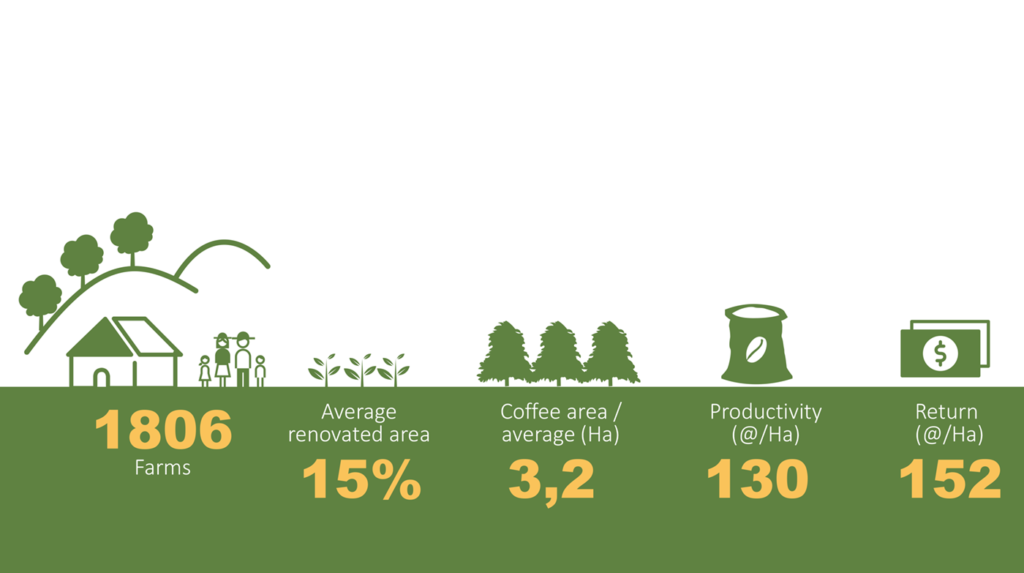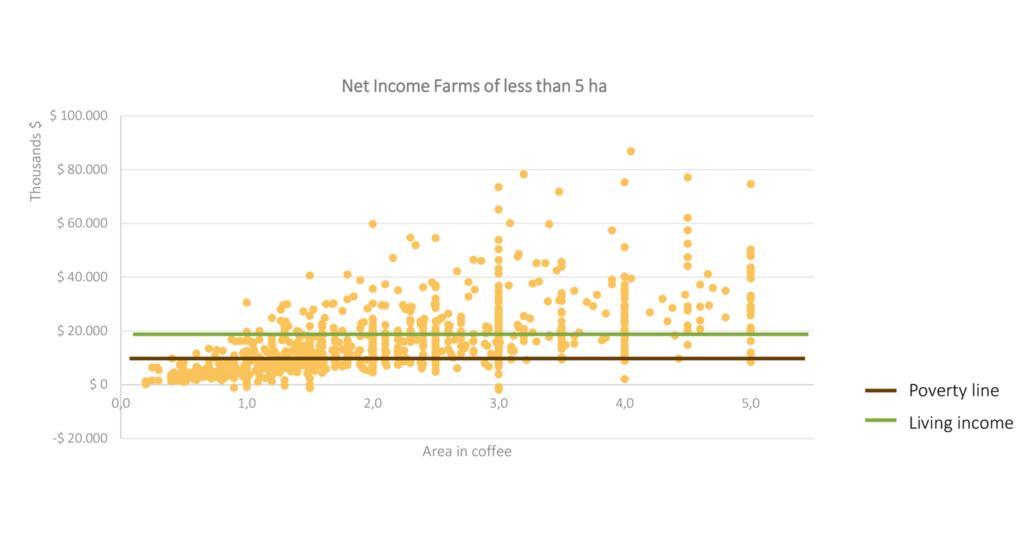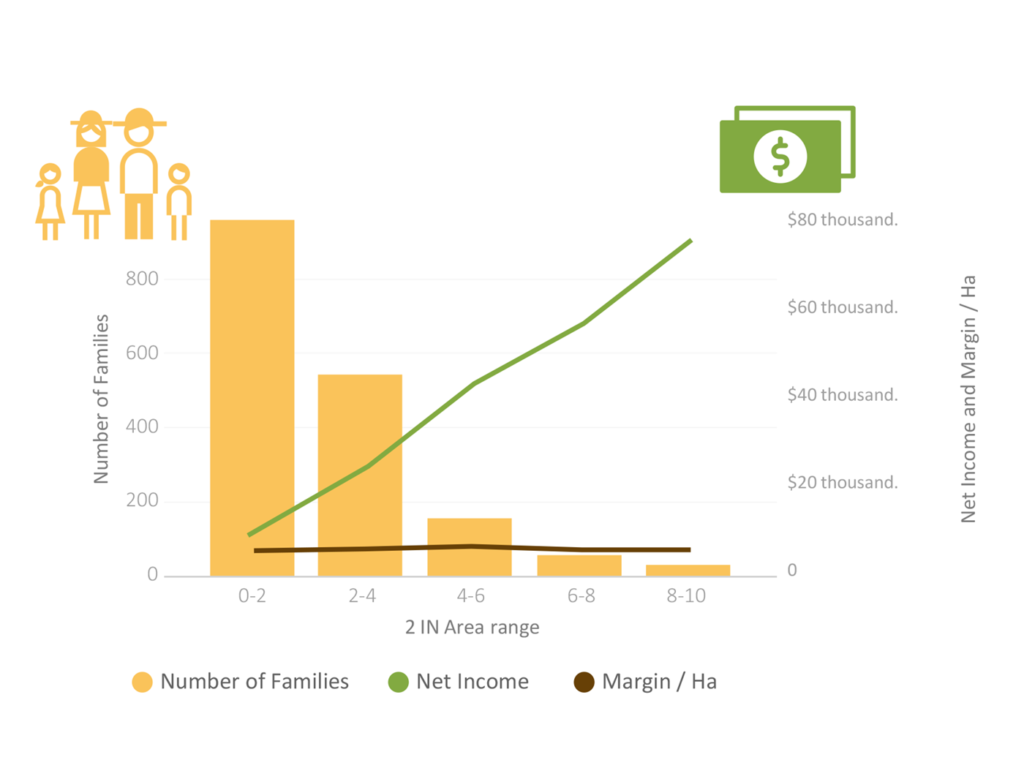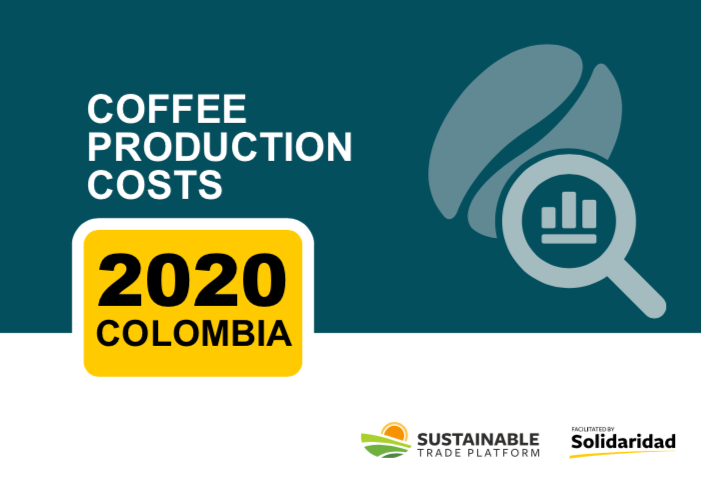The Annual Analysis of Coffee Production Costs in Colombia contributes to a better understanding of the dynamics at farm level to achieve a living income for producers. The inputs for the analysis are provided by the leading trading companies.
The study used the data from more than 1,800 coffee farms (2020). Key purpose of this annual review is to measure the competitiveness of the coffee production in the 3rd largest exporter of the world and provide crucial insights to build data-based solutions for the 500,000 producers and their families that allow to cover their production costs and receiving a living income.

Better prices should go along with bigger investments at farm level
Traditionally, price variable has been seen as the main variable to generate a better income for coffee growing families. However, although in 2020 there was an exceptional coffee price, 64% of the families in the study did not reach the Living Income, understood as: “the net annual income required by a household, in a particular place, to allow a decent standard of living for all its members, including items such as: food, water, housing, education, health care, transportation, clothing, and other essential necessities, including provision for unexpected events” (from The Living Income). Moreover, with an average coffee price was $113,800/arroba (12.5 kg), the highest since Solidaridad carried out the analysis (2011), 44% of families that grow less than five hectares of coffee were below the poverty line. That is why it is urgent to understand the different business variables, in order to propose real and tailored solutions to the producers. Actions of the type “one size fits all” hardly account for the diversity of factors that affect coffee farming in countries like Colombia.

Data shows that there is a wide gap in the profitability margin per hectare between large and small farms, which does not respond to the (operational) production costs, nor to the sales price. Factors such as the cultivated area, the ability for the renewal of coffee plantations, or the investment in crops, end up defining their profitability. These factors vary according to the size of the coffee grower.
A traditional approach to address the issue suggests that by decreasing production costs profitability should increase. The data collected and analyzed in this study contradicts this thesis by showing that the higher the investment per hectare, the greater the profit margin.
This happens because investment is a determining factor in profitability and because technical variables such as the density and average age of coffee in production, have a very important influence on productivity.
Thus, while productivity has an indirect relation with the cost per arroba, its relation is direct with the investment per hectare. So, a greater capital investment on the farms, results in greater productivity. In this way, the higher productivity, the higher the investments and simultaneously, the higher the productivity, the greater the margin per hectare, which leads to the final relation: higher investments per hectare, higher margin per hectare.

Coffee, besides being the main export product of Colombia, it has historically been a social and economic development engine in the country’s regions, marking the importance of reviewing the data, in order to build solutions that allow this flagship product to continue promoting a more equitable and fair society, with opportunities for young people and women and offering fair remuneration for all those who are part of the productive process.
This analysis has raised the need to include components such as crop diversification and cooperation with other farmers in the sector, to create conditions for more economic sustainability. In this way, fostering farms for self-sufficiency and complementary economic activities, such as the payment for environmental services, seek to maintain the ecological balance of the farms and generate additional sources of income for coffee growers.
Download the full document below:

